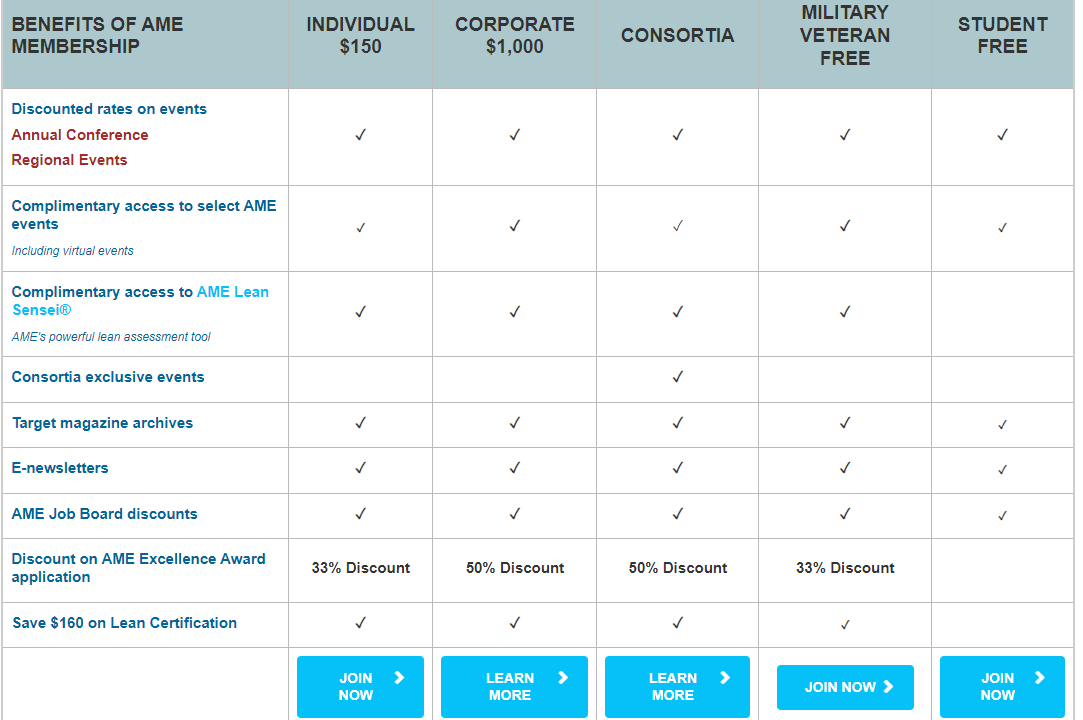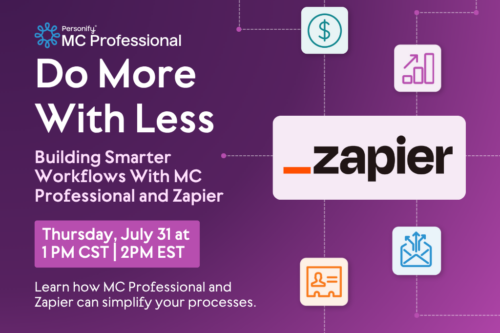Membership levels are a fantastic way to make people feel like they’re part of something special. Tiers not only tell people what they get and how prestigious they are but also carry intrinsic value through their names.
Think about it.
Why do so many companies use names like Silver, Gold, Platinum, Diamond, Exclusive, or Lifetime for their membership levels? Because these names impart a sense of value and preciousness to their products and services.
Sorry, Shakespeare: A rose by any other name might not smell as sweet, so it’s time to put some serious thought into naming your membership tiers.
What are membership levels?

Before we can discuss why membership level names are important, factors to consider when naming them, and how to begin the process, we have to address an overarching question: just what are they?
In essence, these are tiers that specify what benefits a member is entitled to receive. These apply to for-profit companies, associations, and nonprofits alike. Tiers usually correspond to different price points. At a for-profit company (a streaming service), this would include how many shows you got or whether you had to watch ads.
For a professional organization, this might include the events you could attend, exclusive talks with luminaries in the field, or other perks to help your career along.
At a nonprofit, membership tiers are most likely associated with the amount of the donation. In that case, the perks might be as simple as feeling good (you’re a Diamond Donor) or they may be more tangible: paid tickets to fundraisers, season tickets for a sports team, and so on.
That’s what membership levels are; but why do they matter?
Why are membership level names important?
The naming of membership tiers relies on basic psychology. Everyone knows that platinum is worth more than gold, which is worth more than silver, which is worth more than bronze.
By the same token, diamonds are worth more than sapphires, emeralds, and rubies. Associating the value of your product with known values across time and space is quite effective.
However, it’s not the only way. You can also associate value in other ways. For instance, you might name tiers after animals if you’re an animal welfare organization.
Simply put, a good membership name will tell your members more about value than about what they actually get. That you will specify on your membership or user registration page.
What types of organizations create tiered membership levels?
Any types of organizations that offer memberships can offer membership levels including:
- Associations
- Non-profits
- Chambers of commerce
- Parks and recreational services
- Businesses
- Individual creators
- Consultants
Factors to consider when naming membership levels
Before you get to naming your membership levels, it’s important to keep a few factors in mind. Naming conventions must adhere to your mission, aesthetic, and members’ desires. Only by knowing what people want and what moves them can you sell memberships effectively.
Make sure you account for both value and emotional connection, taking into account the following aspects of your audience.
Target audience
To whom are your levels geared toward? Always start here.
Otherwise, you can use all the psychology in the world but still miss the mark. For instance, if your audience cares about the environment but you use names tied to conspicuous consumption, you might turn people off.
On the other hand, professionals don’t want feel-good gimmicks.
They want to know what they’re getting. For them, names like Basic, Professional, and Premium are a better bet, conveying not status but rather comprehensiveness of service.
The budget
The best epithets for your tiers also rely on your budget. Some names are licensed and you might need to pay for them. Others are of the moment, so you might need to update them sooner rather than later. It’s up to you what you want to pay for.
Remember, though, yours isn’t the only budget that matters. Keeping your members’ financial state in mind is also critical. It’s no good giving your levels super-bourgeois names when they’re on a strict budget. Stick to names that appear more function or purpose driven.
Similarly, if your target members or donors are loaded, they will want a luxurious vibe.
The type of association
The more traditional the audience (tax preparers, lawyers, doctors), the more cut-and-dry you should keep the names of your membership levels. Prestige is important, though, so words like Elite, Platinum, Five-Star, or Specialist will all do well.
For creatives, you can be a lot looser, even if the association is professional in nature. Think Watercolor, Pastel, or Woodblock. Organizations that feed the hungry might benefit from the psychology associated with certain foods, while religious nonprofits could name their levels after holy holidays, in order of their importance to the creed.
The industry
As with the type of association, the industry also impacts membership levels. The more serious the industry, the less playful the names should be. By industry, good approaches to nomenclature include:
- Tech: Names for technology and computing could be related to programming, parts, or innovation.
- Medical professions: These can be basic and dry in nature, or they could be related to advances in medicine throughout the years.
- Food and beverage: You might try naming your tiers after different meals of the day if the organization is a bit more lighthearted.
Again, only you can know how serious, professional, and wealthy your audience is. If you’re feeling uncertain, it’s a good idea to check out the competition.
The competition
When you’re still not sure how to proceed, take a look at how others in your niche are naming their membership levels. Research the associations that are most similar to you, then see how they use emotion to play to their audience as a way of encouraging signups, donations, and memberships.
Make sure, however, not to mimic their levels. That could comprise potential for legal action, which no one wants.
Naming your membership levels
Now that you know which factors to consider, it’s time to do the deed. Before you jump right into naming, though, take a moment to consider your member value proposition.
In a nutshell, a value proposition tells your audience what you do, why you do it, and how you do it better than your competition. Make no mistake, there is always another option for your product, service, charity, or professional association; there are always other ways people can spend their hard-earned money.
Therefore, your value proposition must be front and center, and it must make your audience feel as though only your membership levels can get them what they need.
That said, you can take a number of different approaches, such as:
Membership level names based on content access
If you base your names on content access, then they should give members a sense of what they’ll get at each level. For instance, you might choose to separate your content based on type for a professional organization.
The entrance tier might only get papers, while the mid-tier could get subscriptions to all types of media, and the premium tier might have access to live speaking events. This would be a great place to use traditional indicators of value for names, such as Bronze, Silver, and Gold.
Naming your membership levels based on user access
Some organizations base their membership on the number of people who can use it. User access is especially common if you run a B2B organization, serving businesses. In that case, you can choose names that reflect the groups to which they apply. For example, you might choose names such as Solo, Team, Department, and Enterprise.
Membership level names based on content delivery
Your members are busy, and they value on-the-go information … but that doesn’t mean they should necessarily get it for free. You can choose to gate your content delivery types, not the content itself, to enhance your member experience.
In this kind of membership, people would simply pay for the number of devices on which they want to access your content: one, two, five? You might also combine this with user access.
Think about Netflix, which both controls how many accounts you can have and which device types you can use. (For instance, there is now a common plan in which a family of subscribers can share a Netflix account, but only one household can have TV access.)
Naming your membership levels based on supporters
Many nonprofits choose a naming convention based purely on the amount of support from their members. Donation levels can vary wildly at charities, so it’s good to have a way to thank people by offering a bit of prestige.
At a wildlife preservation organization, for instance, you might choose tiers named after endangered species. Consider Red Wolf, California Condor, Beluga Whale, and Pygmy Rabbit, to name a few.
Interest-based membership level names
Some organizations go simple and choose interest-based membership level names, which makes the choice very clear for scrollers who aren’t sure what they’re looking at. For instance, a mining professional association might name their membership levels after the types of mining: Underground, Pit, Placer, and In-Situ.
This naming strategy is simple and effective. While you presumably won’t make more money per tier, you will have happy members who know the content is created just for them.
Time-based membership level names
If it makes the most sense, you can simply name your membership levels after the time periods to which they apply. Some members may wish to pay monthly, others yearly.
If you like, you can choose seasonal or semiannual time periods as well. Typically, that would mean there’s nothing different about the membership perks, but longer time periods cost less for the member.
Membership level examples
If a picture is worth a thousand words, then an example is worth ten thousand. Here are a few ways in which real organizations name their membership levels.
National Association for Tax Professionals

It is hard to think of a drier industry than tax preparation, so it makes sense that the National Association of Tax Professionals employs super simple membership levels: Basic, Professional, and Premium. Their website offers a simple side-by-side comparison of the three levels, including more services in the member price the higher the tier.
Cordage Institute

Think taxes are a little boring? What about rope, cordage, and twine? Yet to the members of the Cordage Institute, such products and the standards that go along with them are fascinating.
It’s not as simple as selecting which membership levels you might be interested in, either; you have to apply to a specific category, of which there are six: Regular, Associate, International Manufacturer, Affiliate, Technical, and Government/Municipality.
The American Society of Administrative Professionals

Executive assistants and administrative professionals need professional development too, and the American Society of Administrative Professionals gets right to the point with two membership levels: Free and Professional. They make their paid tier the obvious choice with webinars, downloads, and reports galore.
American Institute of Chemical Engineers

Chemical engineering is on the frontline of science today, and its members need continuous updates about safety, innovation, and global developments. At the American Institute of Chemical Engineers, membership levels offer entrance at all price points, from Student to Explorer to Pro. At each level, the member is entitled to more resources, and you can upgrade whenever you wish.
Healthcare Financial Management Association

Sometimes a field is so large that you need a huge array of options to fully encompass that breadth. The Healthcare Financial Management Association understands that, offering two different types of membership tiers, one for individuals and one for organizations.
More specifically, Individuals may choose from Professional, Business Partner, Student, Faculty, or International. Organizations may opt for Enterprise, Critical Access Hospital, Indian Health Service Facility, or Employees of Enterprise Organizations.
Key takeaways
So what are the final takeaways on membership levels?
- At its most basic, a membership level is a designated tier that specifies what a member is entitled to regarding benefits, events, or prestige.
- Membership level names matter because they give people emotional insight into what your tiers offer and/or create a sense of value.
- When naming your levels, make sure to keep in mind factors such as target audience, budget (yours and your audience’s), type of association, industry, and what the competition is doing.
- You can bucket your members by content access, user access, content delivery, supporters, interest areas, or time.
- If you’re stuck on how to name your membership levels, take a look at how other organizations in your field (or even in other fields) have done it.
Enhance your membership tiers with MemberClicks
Are you ready to take your membersip levels to the next, well, level? Let MemberClicks help you, with digital technologies meant to help you engage your members, build community, and grow your association today. All you have to do is get in touch to learn more.
















